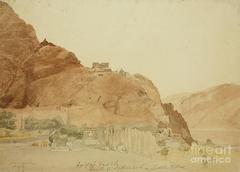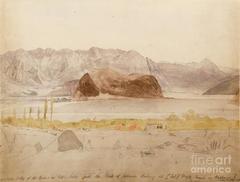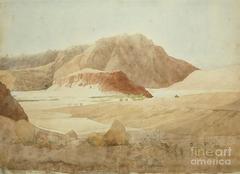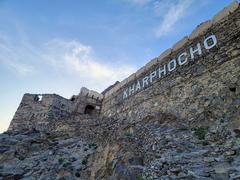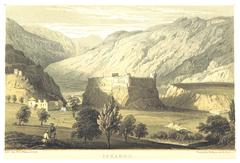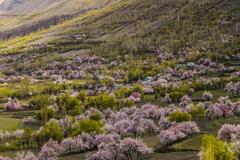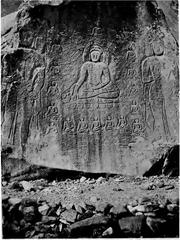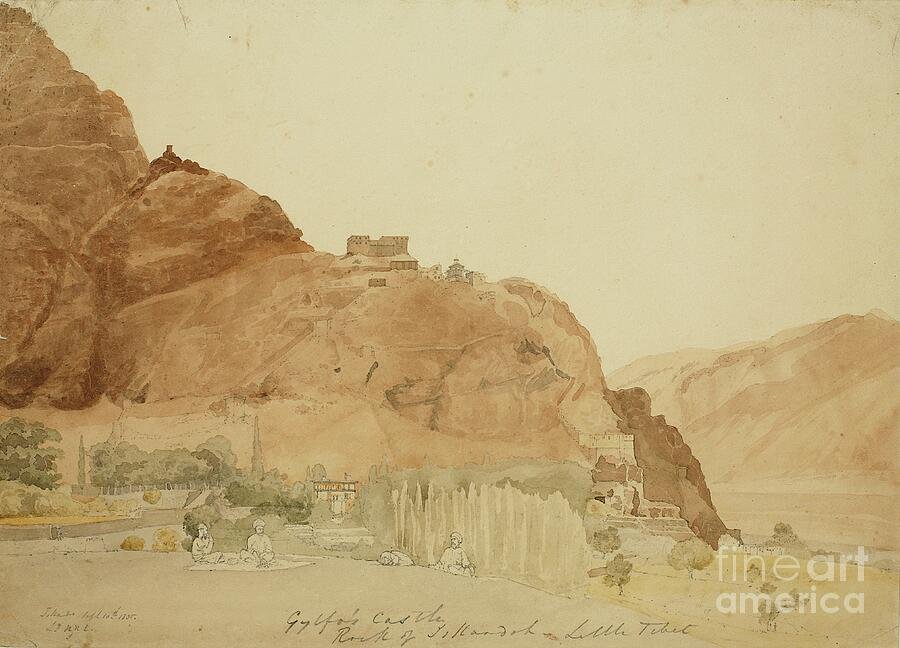
Comprehensive Guide to Visiting Kharphocho Fort, Skardu, Pakistan
Date: 24/07/2024
Introduction
Kharphocho Fort, also known as Skardu Fort, stands as a testament to the rich history and cultural heritage of Pakistan’s Gilgit-Baltistan region. Perched on a hilltop approximately 4,600 feet above sea level, the fort offers breathtaking views of the Skardu Valley and the confluence of the Indus and Shigar rivers. Constructed in the late 16th century by King Ali Sher Khan Anchan, Kharphocho Fort served as a strategic military stronghold and a royal residence. The fort’s elevated position provided a vantage point for monitoring enemy movements and defending against invasions, underscoring its military significance (Traveler Trails).
Throughout its storied past, Kharphocho Fort has witnessed numerous historical events, including attempts by the Mughal Empire to capture it in the 17th century and its subsequent destruction by the Dogra general Zorawar Singh in 1840. The fort’s resilience and strategic importance were further highlighted during the First Kashmir War in 1947-1948, when it was occupied by the Jammu and Kashmir State Forces and later surrendered to the Gilgit Scouts aligned with Pakistan (Lovin Pakistan).
Today, Kharphocho Fort remains a symbol of the region’s rich cultural heritage and historical significance. Visitors are drawn to the fort not only for its historical allure but also for its architectural brilliance, panoramic views, and the opportunity to explore its intriguing features, such as the secret tunnel that connects the fort to Skardu city (Travel Pakistani). This comprehensive guide aims to provide visitors with all the information they need to make the most of their visit to Kharphocho Fort, including its history, architectural features, visitor information, and travel tips.
Table of Contents
- Introduction
- History of Kharphocho Fort
- Architectural Features
- Modern-Day Significance
- Visitor Information
- Preservation Efforts
- Visitor Experience
- Key Historical Events
- Conclusion
- FAQ Section
History of Kharphocho Fort
Construction and Early History
Kharphocho Fort was constructed in the late 16th century by King Ali Sher Khan Anchan, a prominent ruler of Baltistan. Ali Sher Khan Anchan is credited with unifying Baltistan and extending its borders to Ladakh. The fort was strategically built on a hilltop, approximately 4,600 feet above sea level, overlooking the confluence of the Indus and Shigar rivers. This location provided a vantage point for monitoring and protecting the city of Skardu (Traveler Trails).
Military Significance
Throughout its history, Kharphocho Fort has played a crucial role in the military defense of the region. The fort’s elevated position made it an ideal location for monitoring enemy movements and defending against invasions. During the 17th century, the Mughal Empire attempted to capture the fort but failed, making Kharphocho Fort one of the few forts in Pakistan that was never conquered by the Mughals (Lovin Pakistan).
Dogra Invasion and Reconstruction
In 1840, the Dogra general Zorawar Singh, under the command of Maharaja Gulab Singh, invaded Baltistan and stormed Kharphocho Fort. The fort was razed to the ground during this invasion. Zorawar Singh subsequently built another fort on level ground next to the Kharpocho hill, which remained until the First Kashmir War in 1947 (Wikipedia).
Role in the First Kashmir War
During the First Kashmir War in 1947, the fort was occupied by the Jammu and Kashmir State Forces under the command of Lt. Col. Sher Jung Thapa. The local Gilgit Scouts, aligned with Pakistan, laid siege to the fort. After running out of rations and ammunition, the Indian forces surrendered on August 14, 1948, exactly one year after the establishment of Pakistan (Traveler Trails).
Architectural Features
The architecture of Kharphocho Fort is a testament to the ingenuity and craftsmanship of the Balti people. The fort is constructed using massive stones and wood, with large boundary walls designed to withstand attacks. The fort’s layout includes narrow and steep pathways, making it difficult for invaders to penetrate. Despite suffering damage during various conflicts, including the war of 1948, the fort’s structure remains largely intact, attracting thousands of tourists annually (Travel Pakistani).
Secret Tunnel
One of the most intriguing features of Kharphocho Fort is the secret tunnel that connects the fort to the city of Skardu. This tunnel was built under the mountains and was used during wartime to transport supplies and personnel. The existence of this tunnel was unknown to the royal families, adding an element of mystery to the fort’s history. Visitors can explore this tunnel during their visit to the fort (Travel Pakistani).
Modern-Day Significance
Today, Kharphocho Fort stands as a symbol of the rich cultural heritage and historical significance of Skardu and the broader Gilgit-Baltistan region. The fort offers panoramic views of the Skardu Valley and the Indus River, making it a popular tourist destination. The fort’s historical allure and architectural brilliance provide visitors with a unique glimpse into the region’s past (Discover Pak).
Visitor Information
Visiting Hours
Kharphocho Fort is open to visitors from 9:00 AM to 5:00 PM daily. It is advisable to check for any changes in visiting hours before planning your visit.
Ticket Prices
The entrance fee for Kharphocho Fort is PKR 200 for local tourists and PKR 500 for international tourists. Children under the age of 12 can enter for free.
Travel Tips
- Best Time to Visit: The best time to visit Kharphocho Fort is from April to October, when the weather is pleasant and the views are spectacular.
- How to Get There: The fort is accessible by a short trek from Skardu city. It is recommended to wear comfortable shoes and carry water.
- Nearby Attractions: While in Skardu, consider visiting other historical sites such as Shigar Fort and Satpara Lake.
Preservation Efforts
Efforts have been made to preserve and restore Kharphocho Fort to maintain its historical and cultural significance. These efforts include repairing damaged sections of the fort and promoting it as a key tourist attraction. The fort’s preservation is crucial for educating future generations about the region’s history and heritage (Traveler Trails).
Visitor Experience
Visitors to Kharphocho Fort can expect a challenging yet rewarding experience. The trek to the fort involves navigating steep and narrow pathways, but the effort is well worth it for the breathtaking views and historical insights. The fort’s location provides a serene and picturesque setting, making it an ideal spot for photography and exploration. Additionally, the fort’s historical significance and architectural features offer a fascinating experience for history enthusiasts and casual tourists alike (Graana).
Key Historical Events
- Construction by Ali Sher Khan Anchan (Late 16th Century): The fort was built to protect the kingdom of Ladakh from invasions by the Mughal and Tibetan Empires.
- Mughal Invasion (17th Century): The Mughals attempted to capture the fort but failed.
- Dogra Invasion (1840): General Zorawar Singh stormed and razed the fort.
- First Kashmir War (1947-1948): The fort was occupied by Indian forces and later surrendered to Pakistani forces.
Conclusion
Kharphocho Fort’s rich history, architectural brilliance, and strategic significance make it a must-visit destination for anyone traveling to Skardu. The fort offers a unique blend of natural beauty and historical intrigue, providing visitors with an unforgettable experience. Whether you are a history buff, an adventure seeker, or simply looking to explore the cultural heritage of Gilgit-Baltistan, Kharphocho Fort is a destination that should not be missed (Pakistan Traveler).
FAQ Section
What are the visiting hours for Kharphocho Fort?
Kharphocho Fort is open to visitors from 9:00 AM to 5:00 PM daily.
How much are the tickets for Kharphocho Fort?
The entrance fee is PKR 200 for local tourists and PKR 500 for international tourists. Children under the age of 12 can enter for free.
What is the best time to visit Kharphocho Fort?
The best time to visit is from April to October, when the weather is pleasant.
Are there any nearby attractions?
Yes, nearby attractions include Shigar Fort and Satpara Lake.
Stay Up to Date
For more information and updates on Kharphocho Fort and other historical sites, follow us on social media and check out our other related posts.
